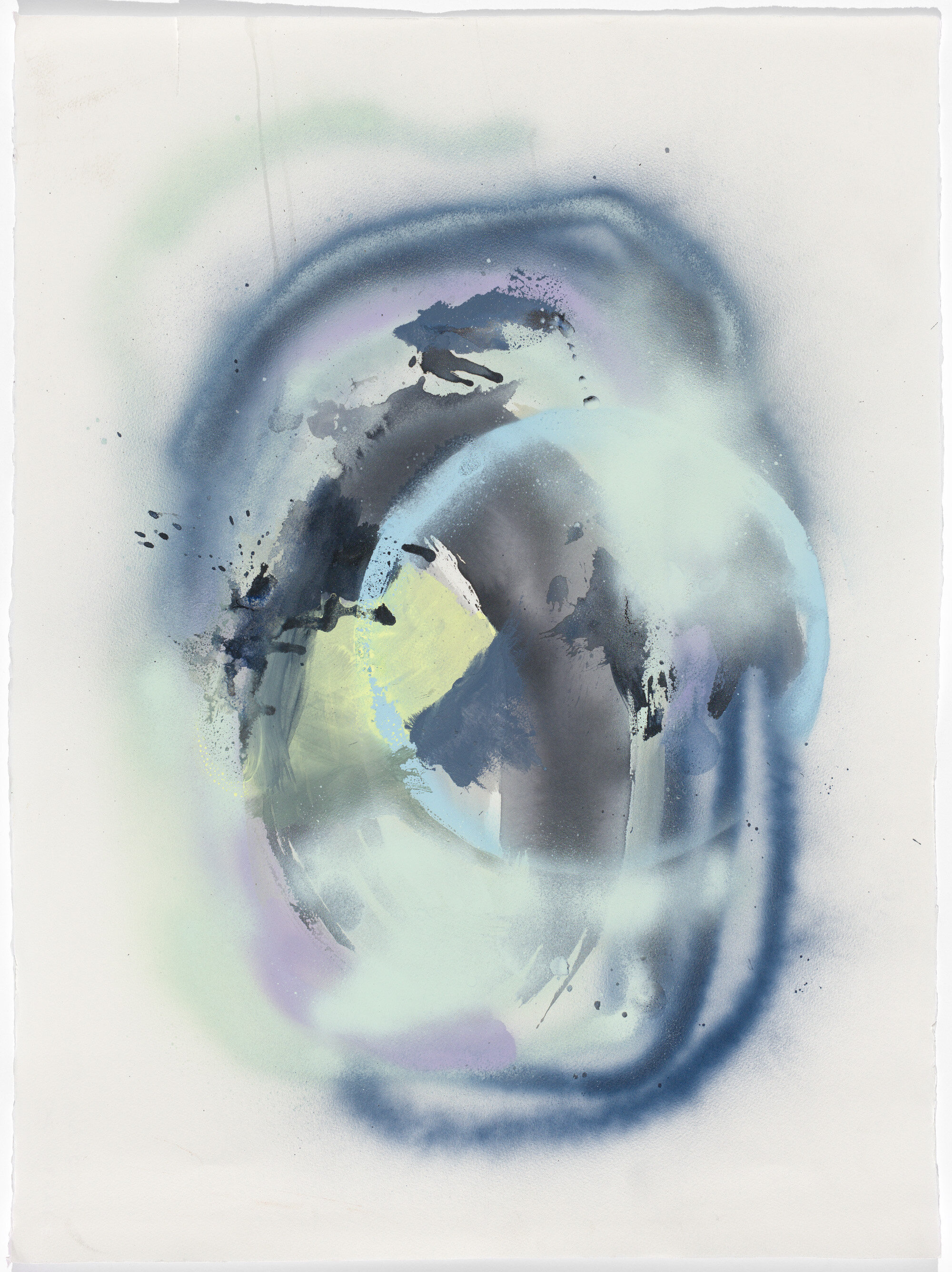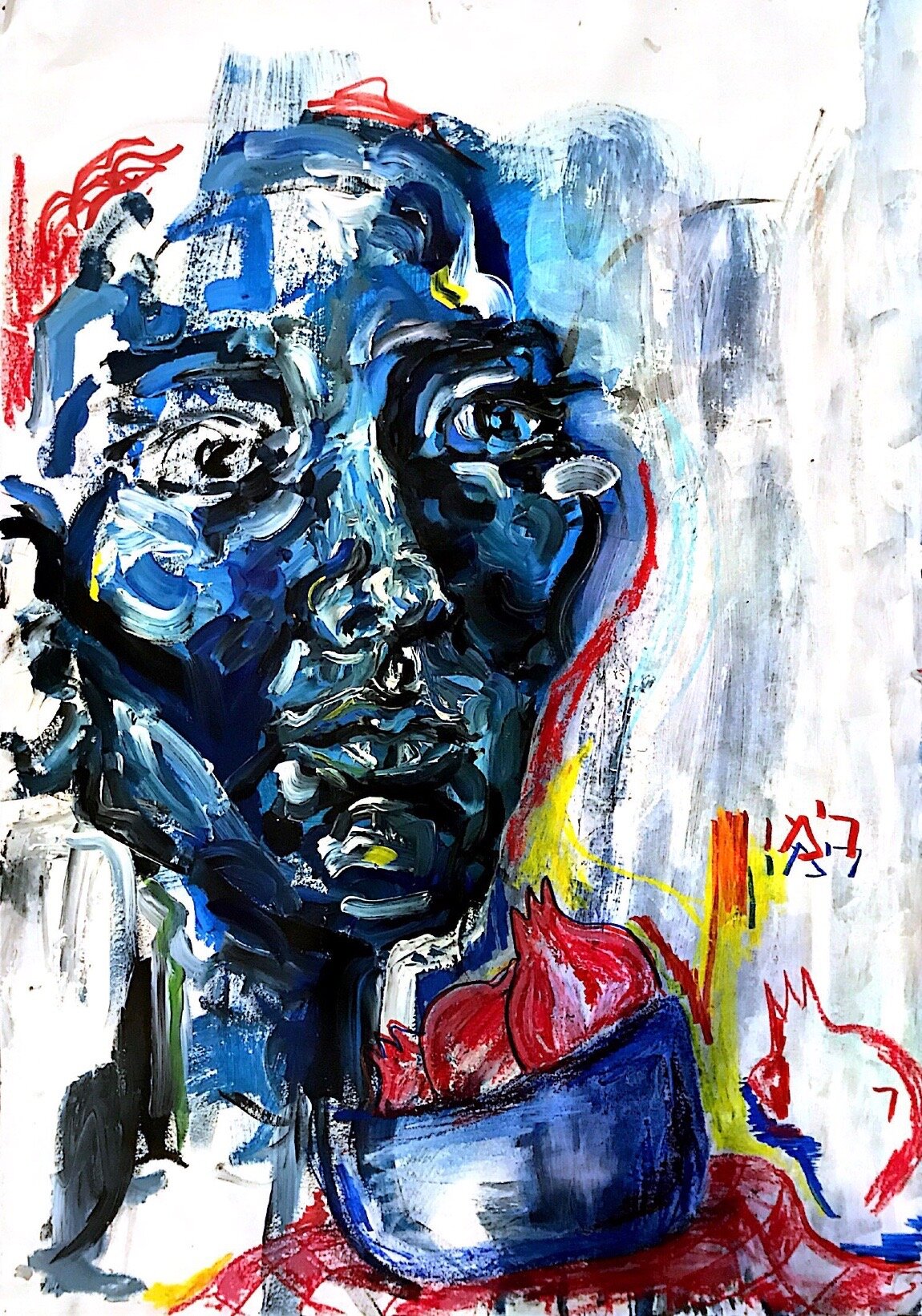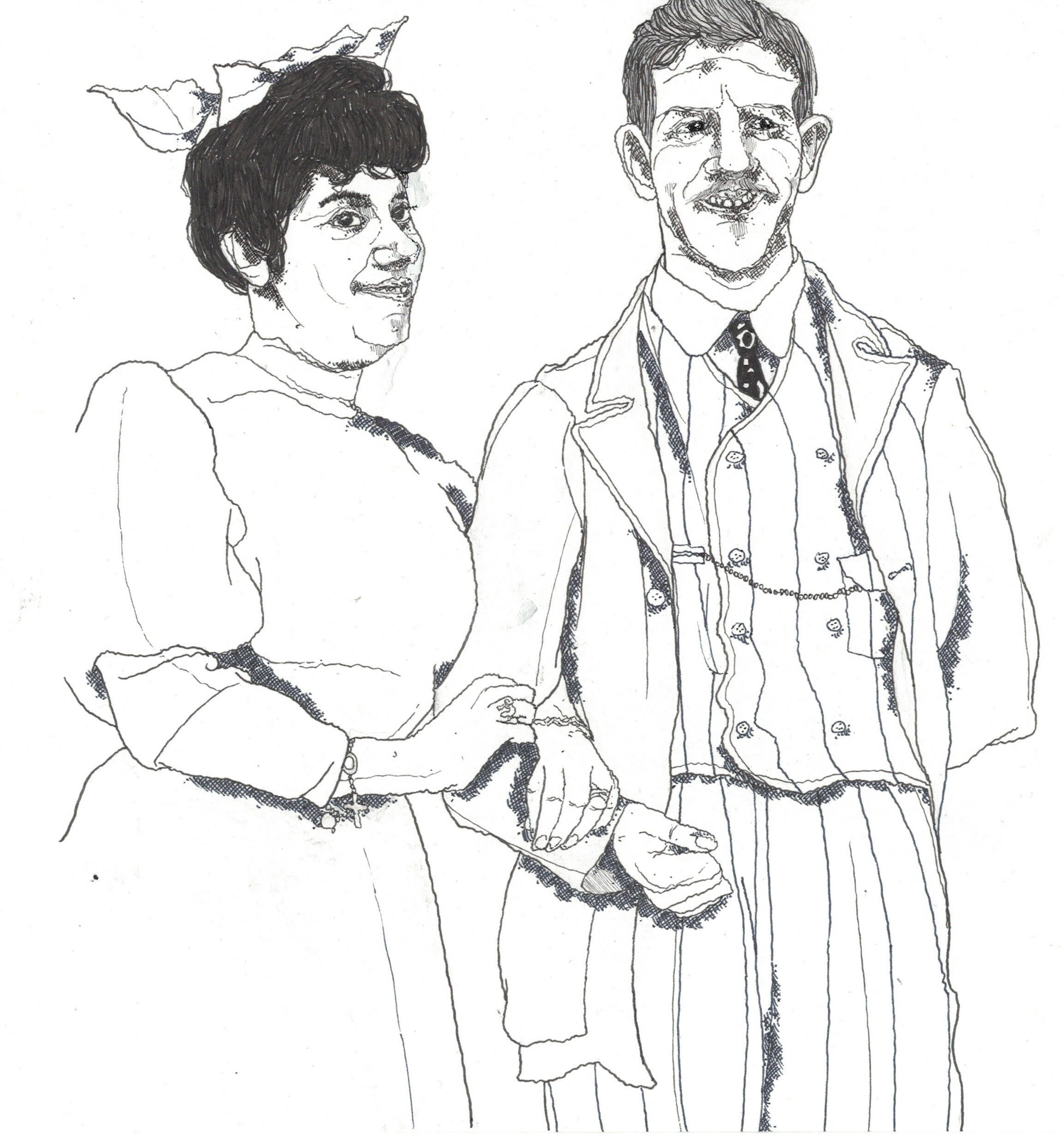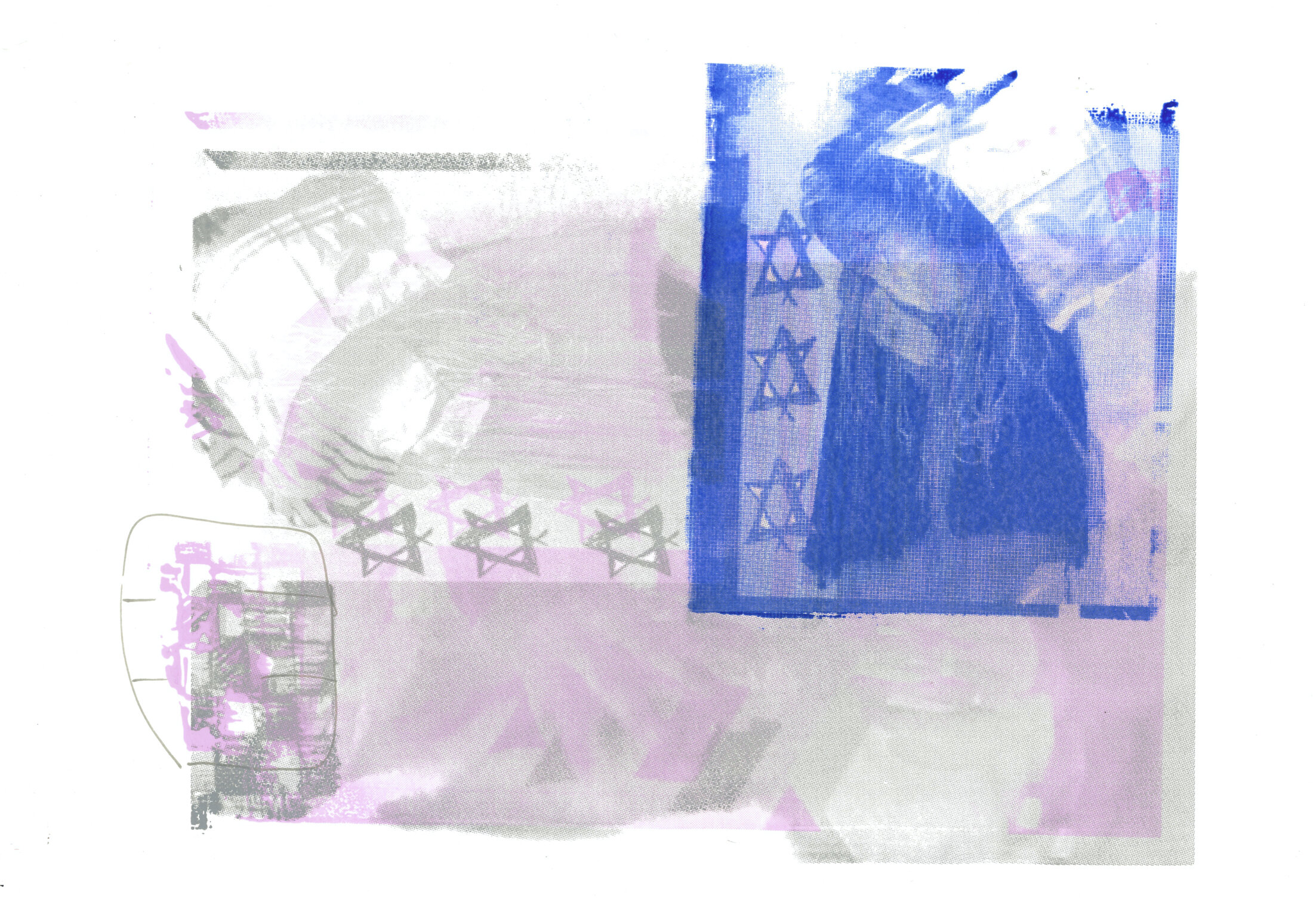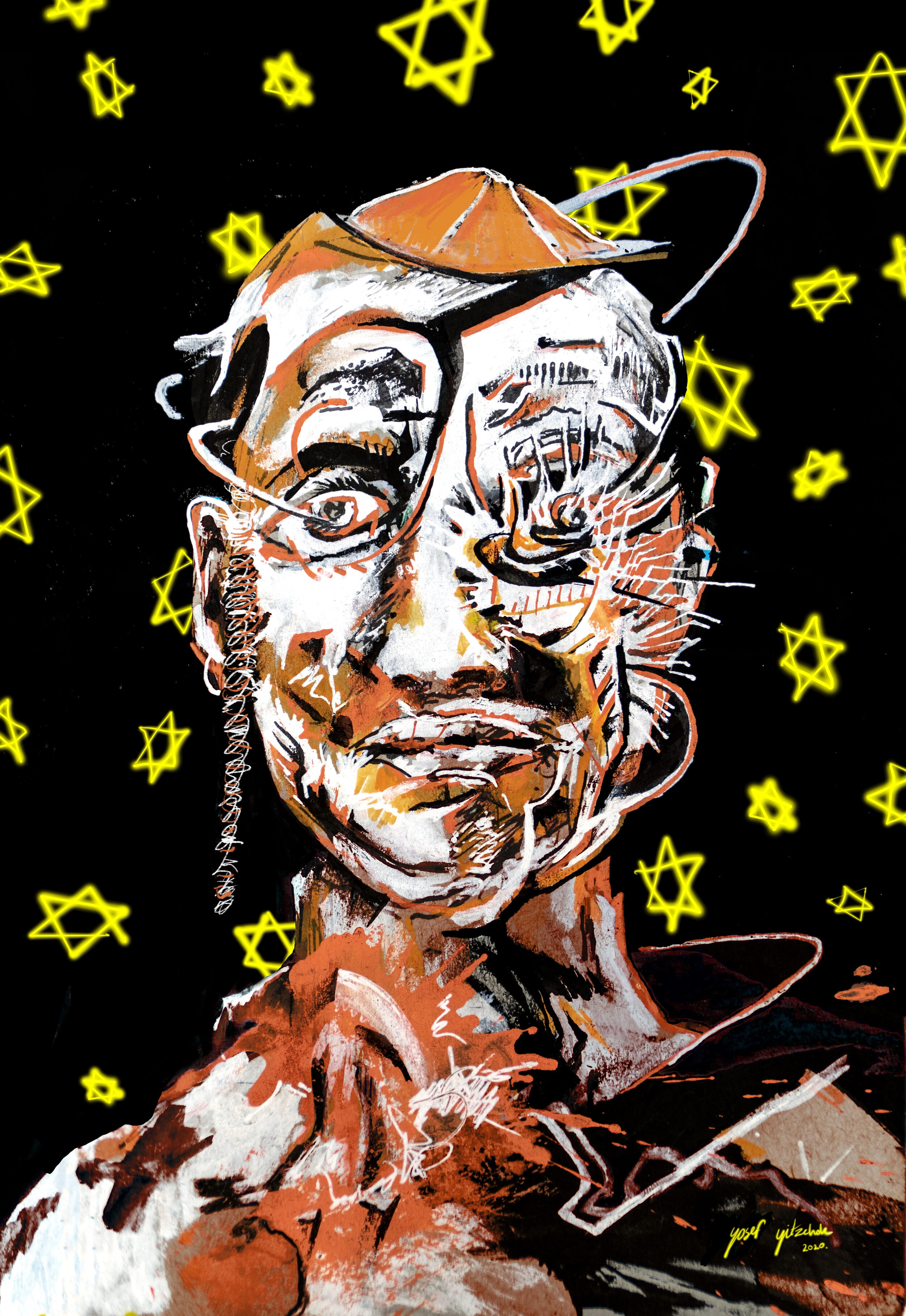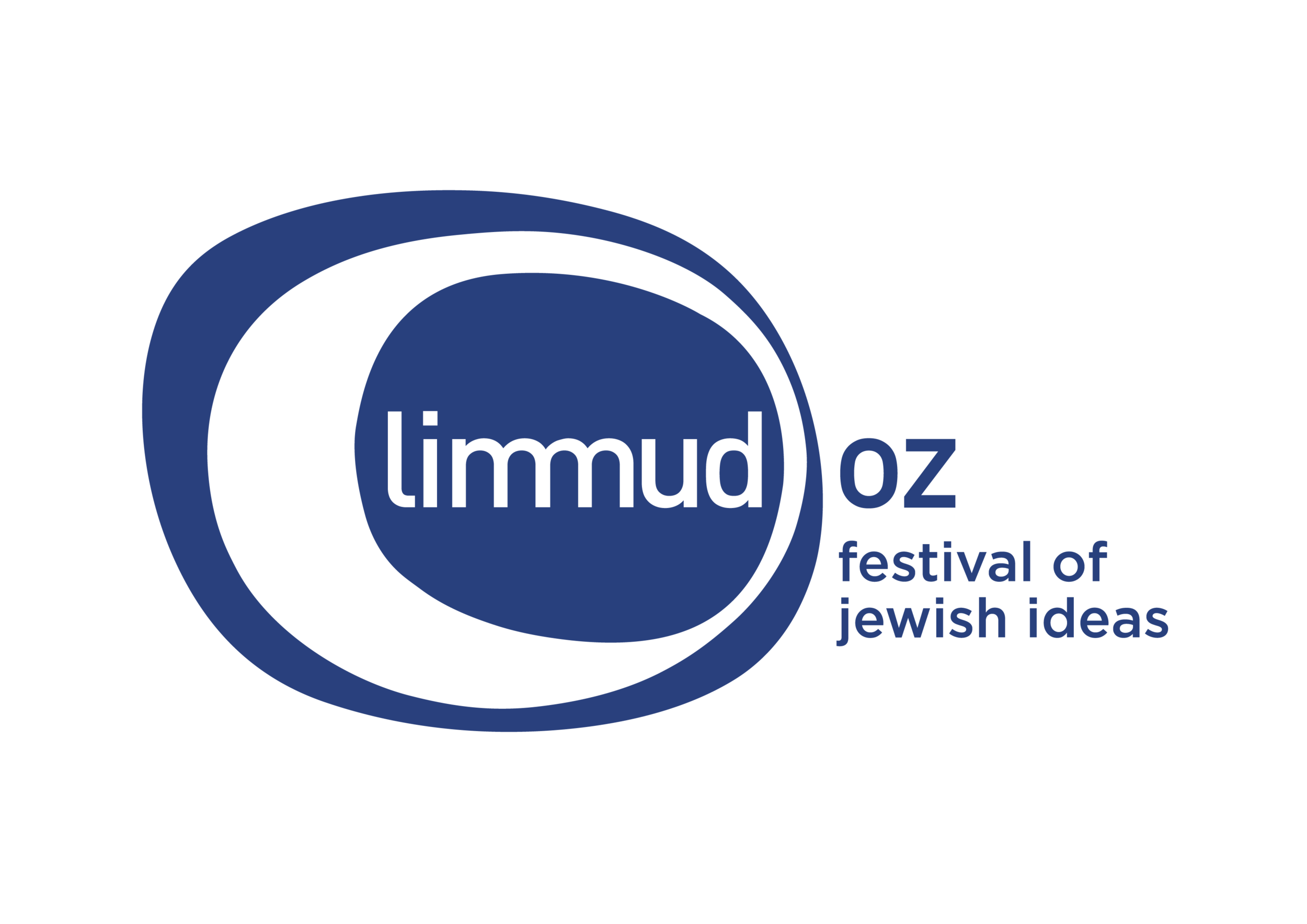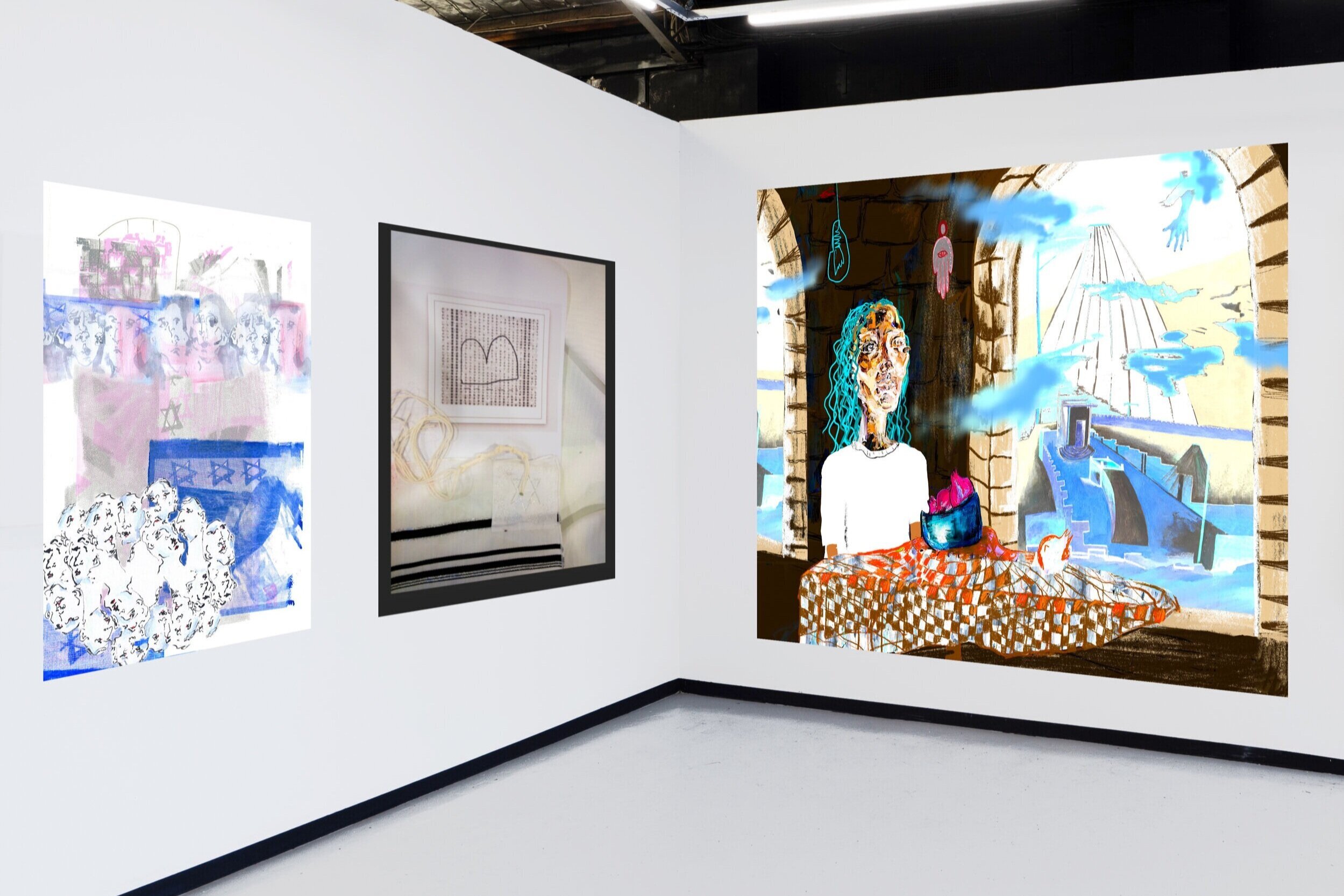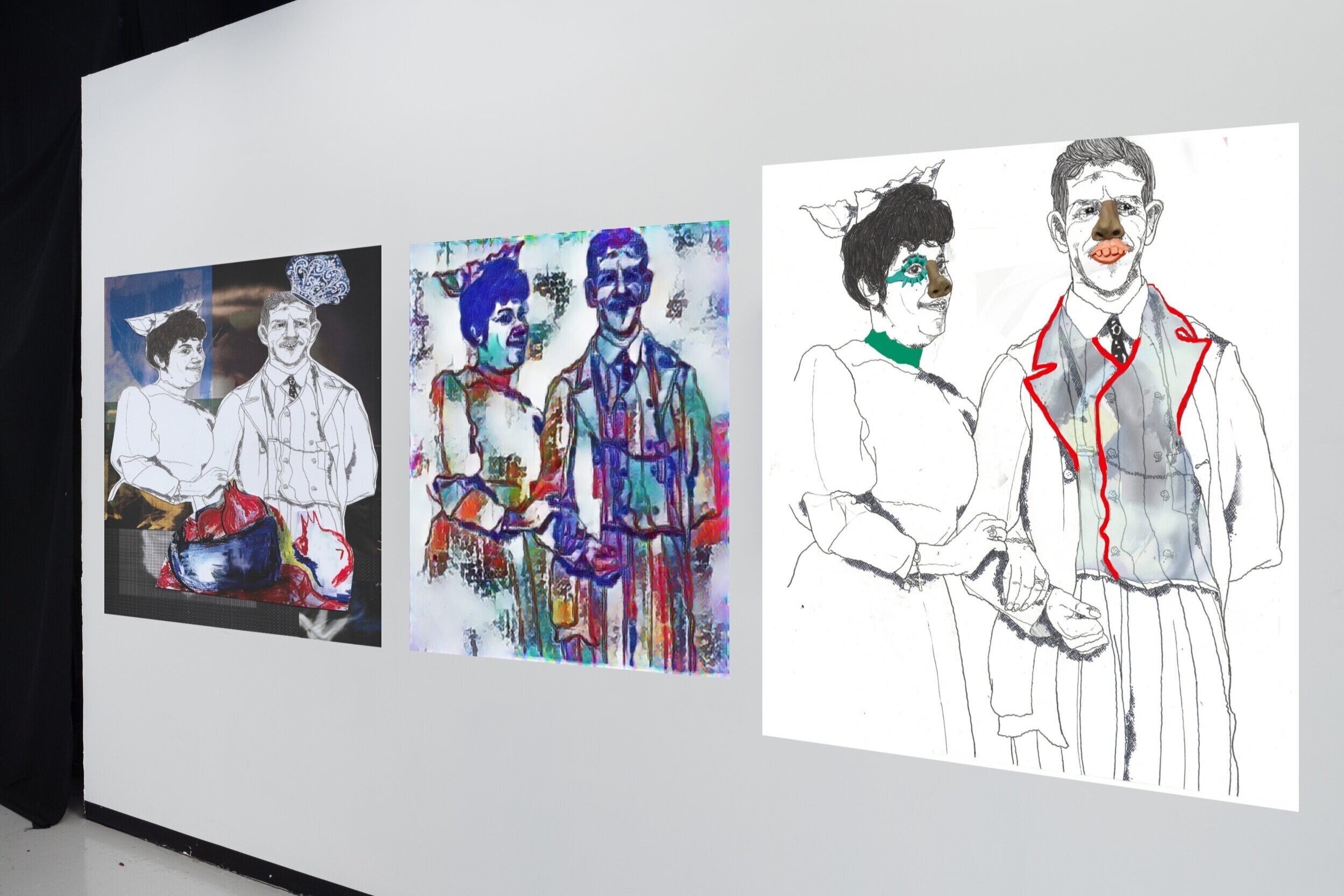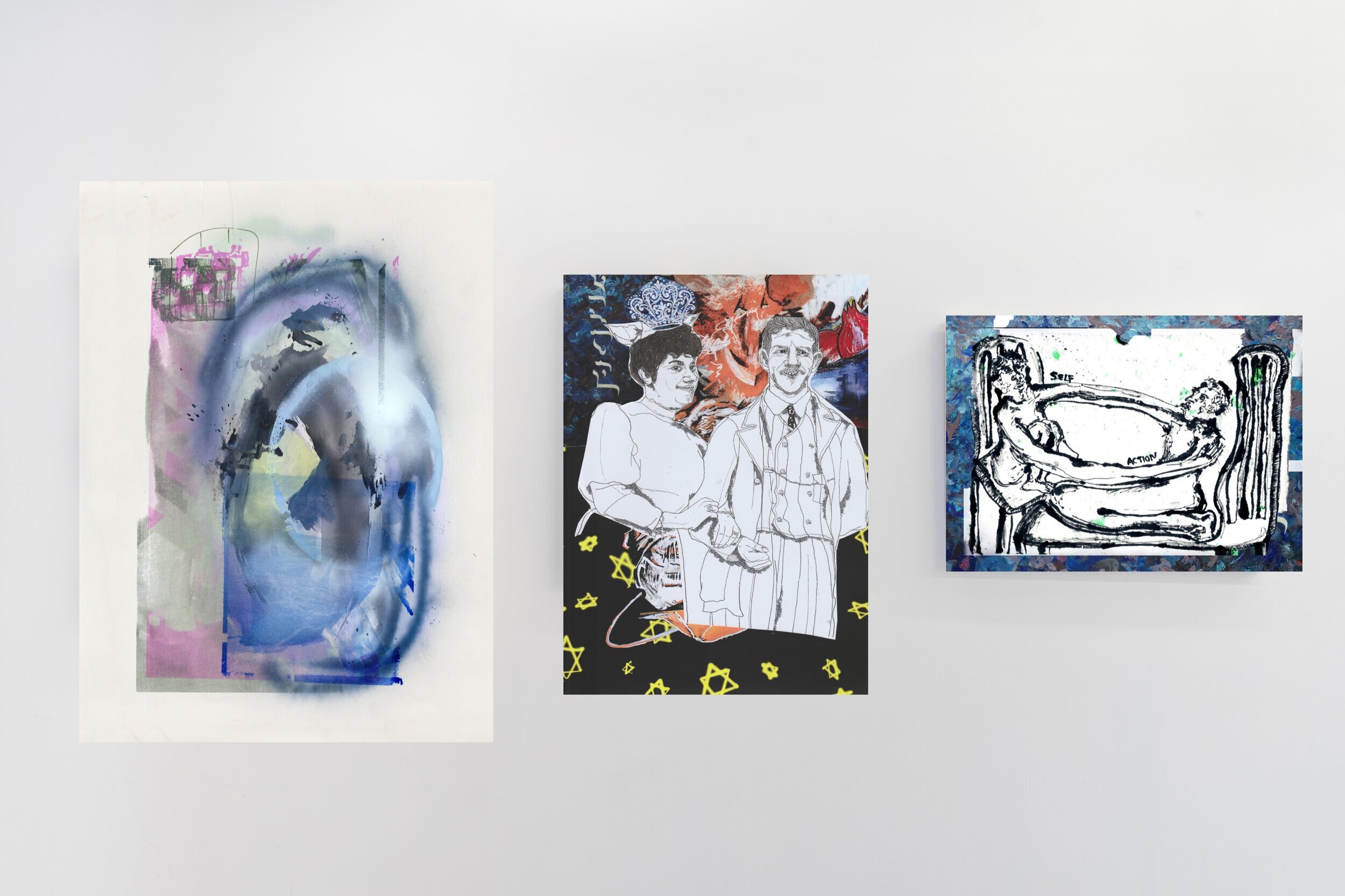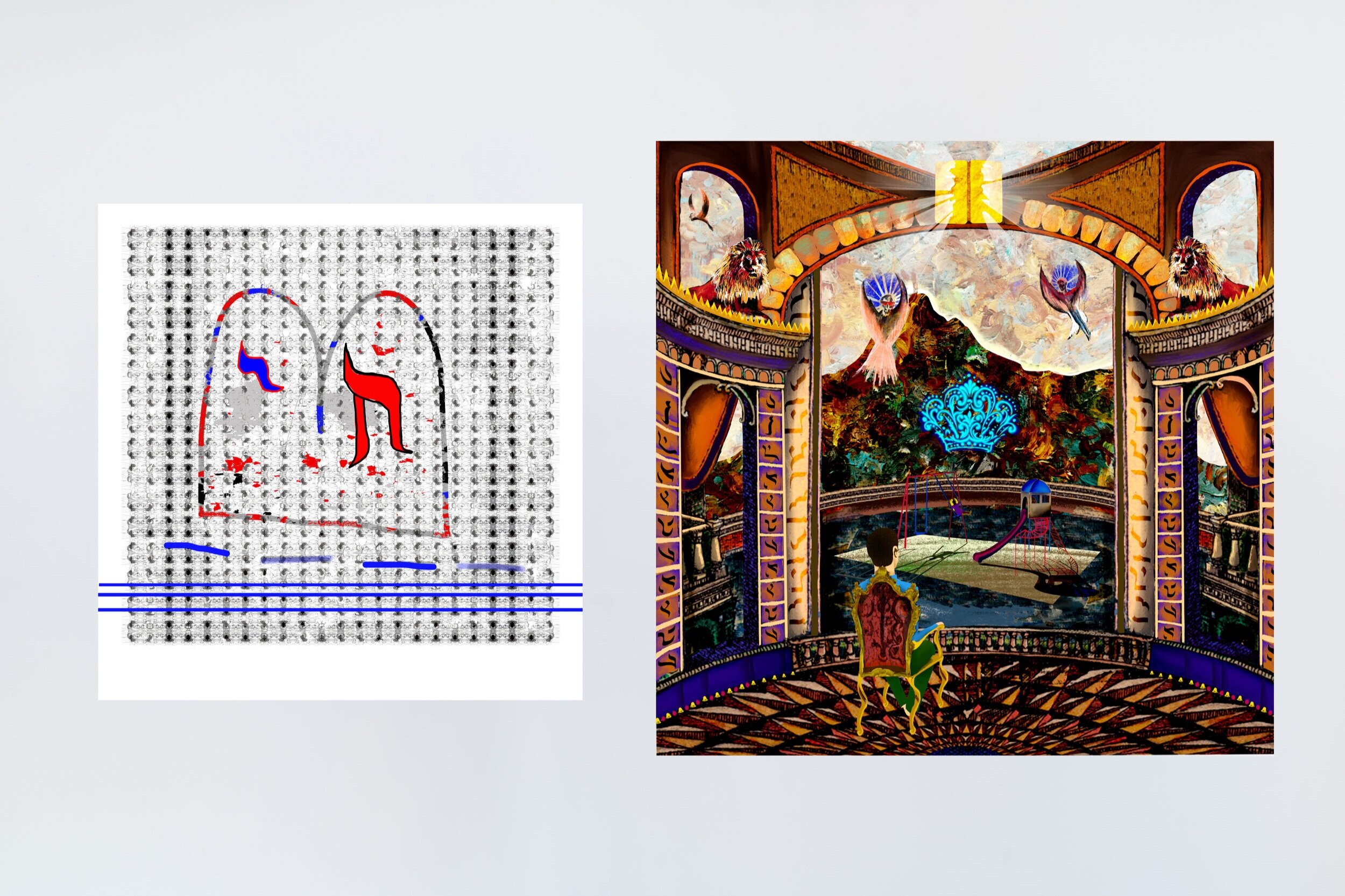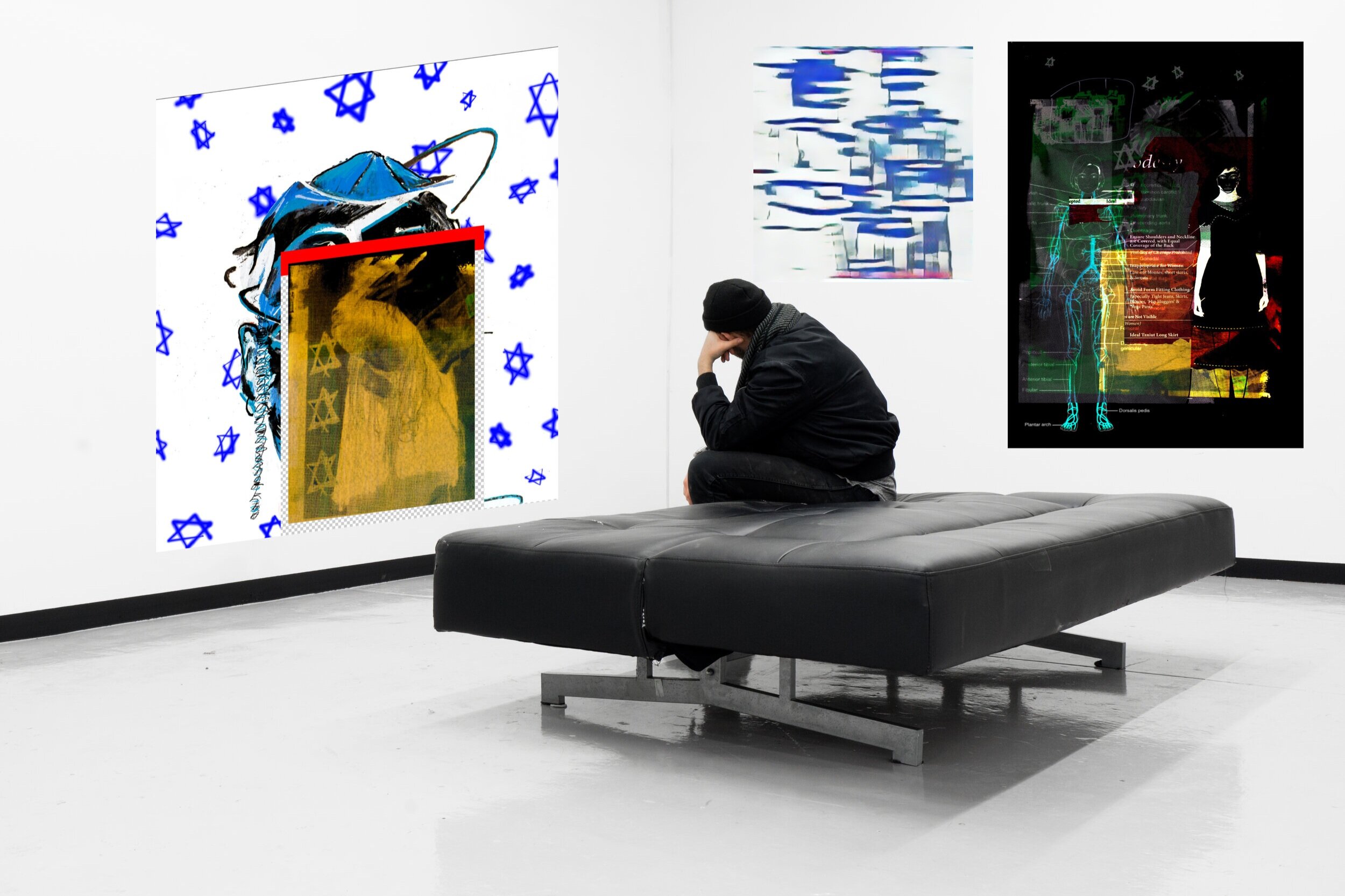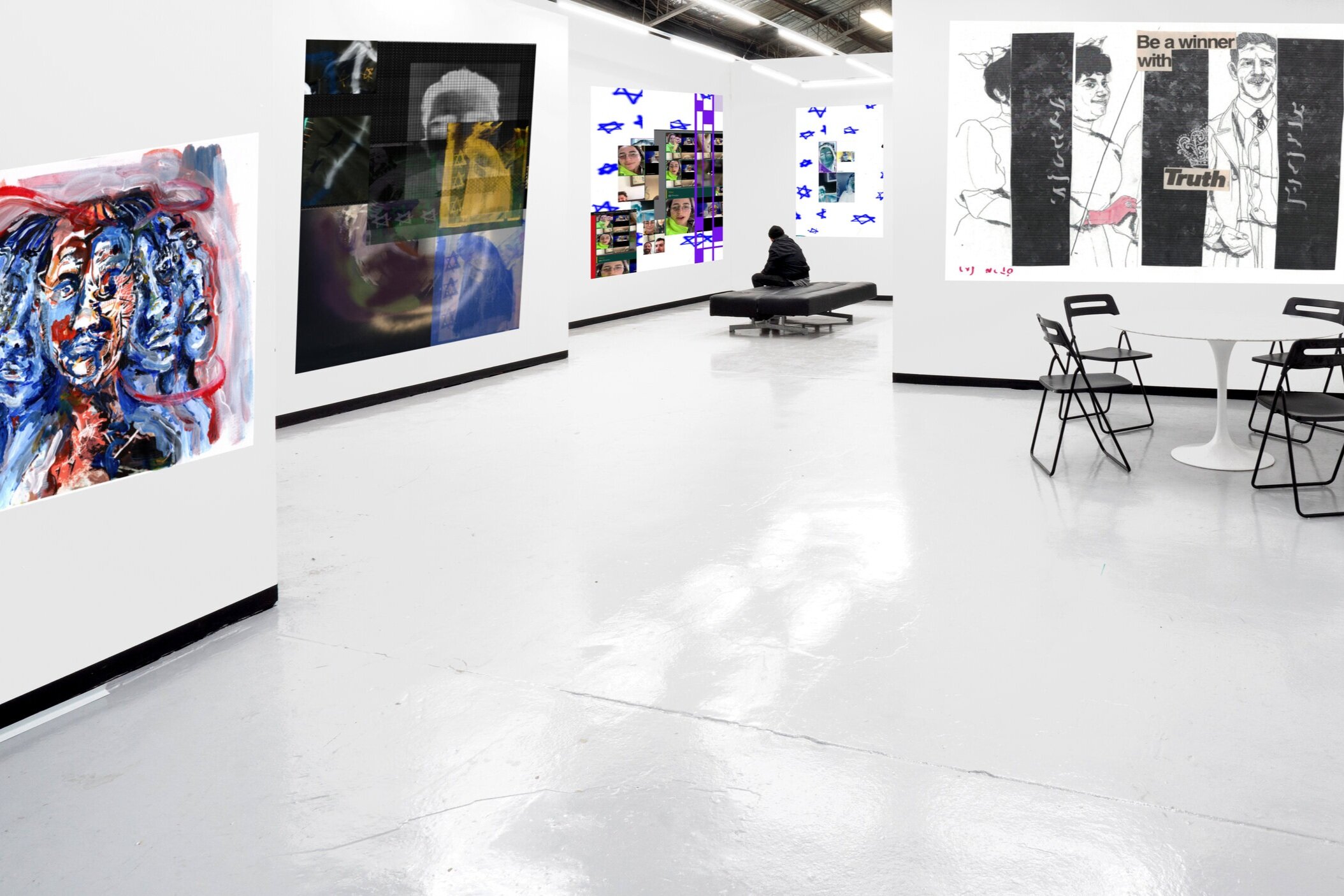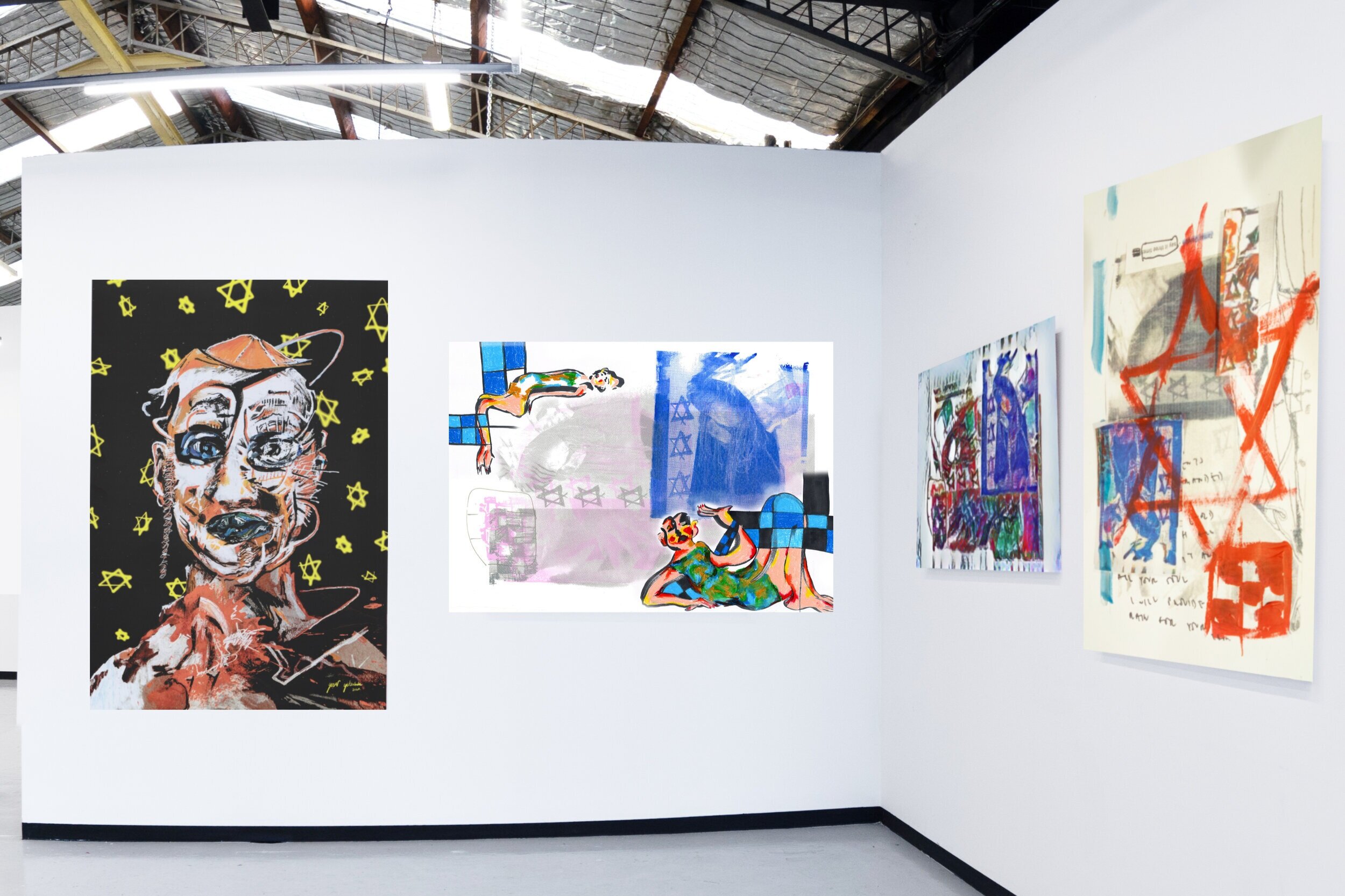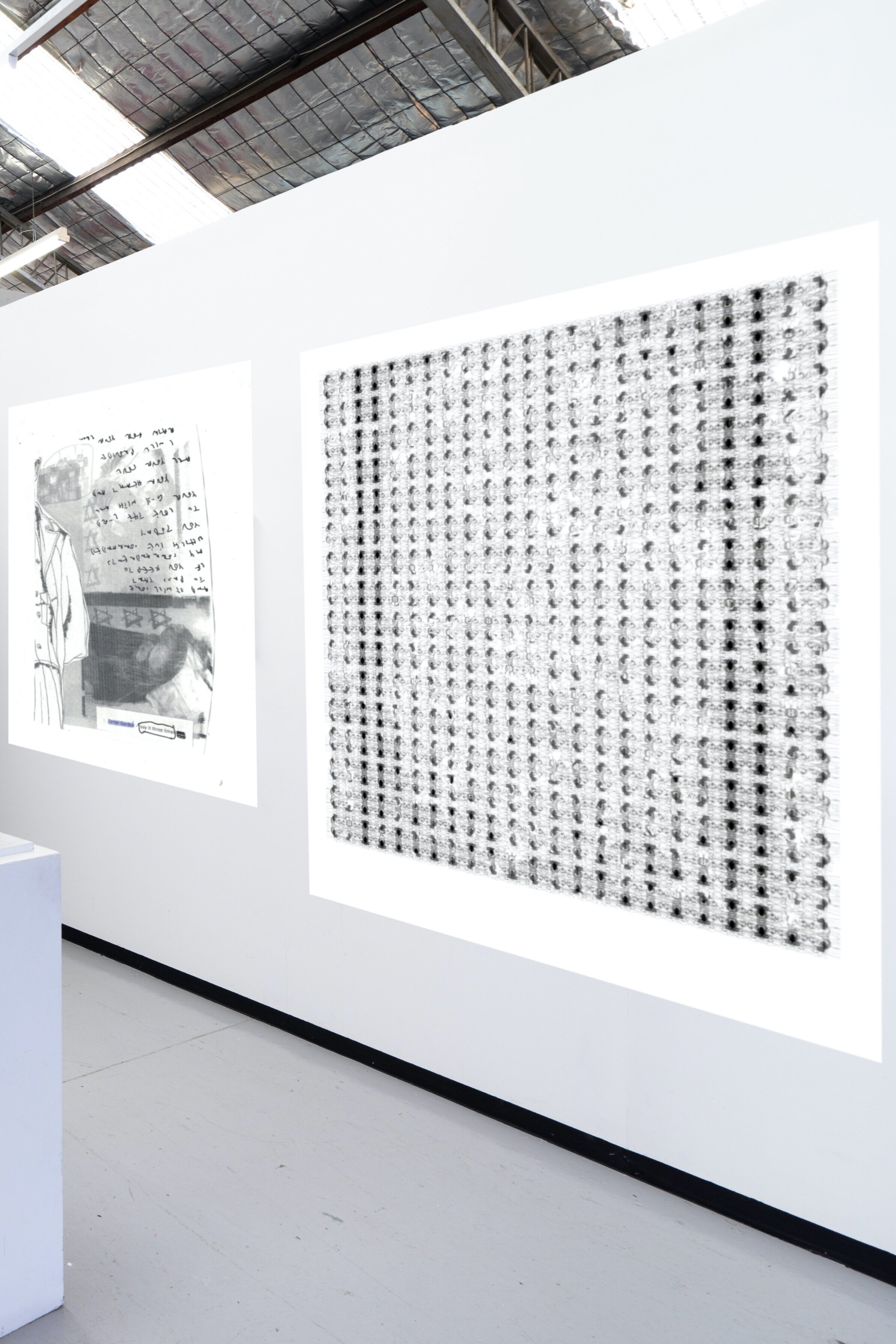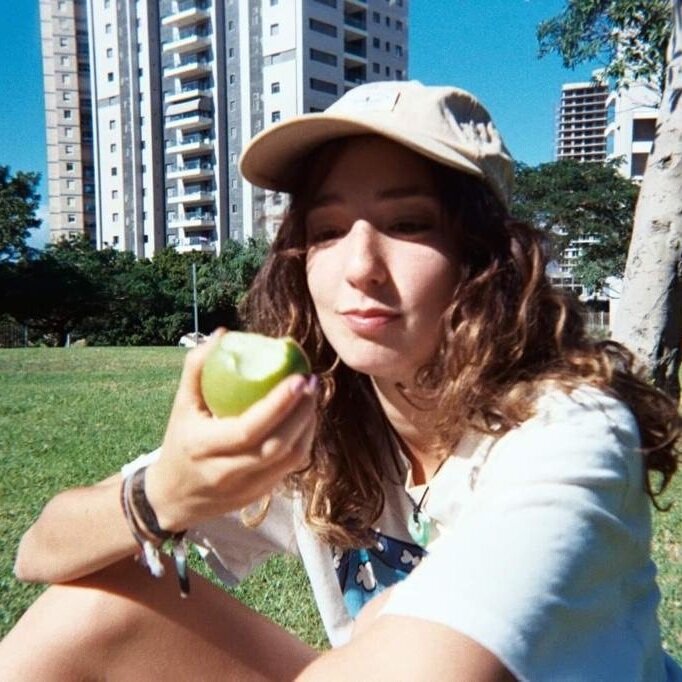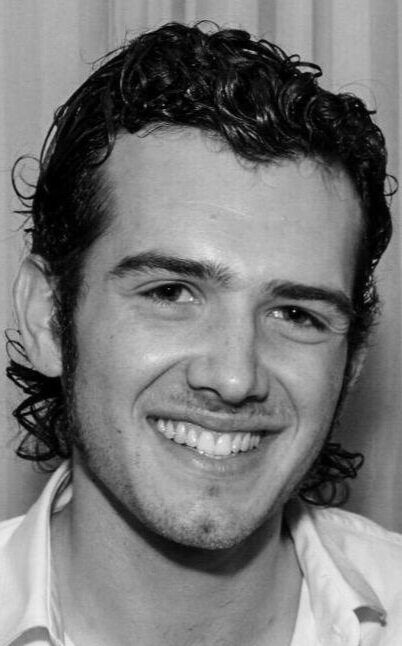LimmudArt presents
What lies in between
Limmud Art: What lies in between centres around process: working back and forth, painting over, hijacking, printing, adding and subtracting. This creative process was compressed into less than a month, forcing artists to work within a tight time constraint and birthing a shared method of working. The virtual process and connection was a way of responding to the current climate, the core of what art is about.
The artists responded to a Jewish text by Daniel A. Drubach titled ‘Judaism, Brain Plasticity, and the Making of the Self’, as a guiding force to ground and centre the work we all went on to create.
We conversed about the power and meaning of ritual. A Jewish ritual: putting on a tallit, holding a siddur, the words we speak or sing, observing Shabbat and Jewish holidays. We were called to question how the text explored the detachment from information and knowledge, and the power of an action - the power of Jewish ritual. If we were to re-imagine ritual, what is the texture of these rituals? The feeling of an action uncovers and unfolds meaning, which is it’s essence. The present world holds so much information, and stimuli. Everywhere we look. It is actually the thing itself and the action of holding something, feeling something, which is the essence of the meaning...and then, what follows action?
A Jewish theme we all related to was the idea of repetitive action producing spiritual outcomes. The notion that you can’t understand something to its potential without experiencing it to its fullest. A potential danger that comes with this idea is the guaranteed powerfulness of it all. That you will benefit from these laws, guaranteed that Jewish laws are there for your benefit. As we grappled, and broke down the text, a core essence of Jewish learning, we oscillated between passion and practice, and the emotional dichotomy we face in our Judaism. Just as Jacob wrestled with the angel (Genesis 32:22–32)
Throughout the in between, it was revealed the works were actually grounded by the process rather than these concepts and ideas written by Drubach, and eventually, once we were on our way to making, we were able to appreciate its guidance. It was helpful, the connections were made, and we were okay without it. What unfolded was unknown at the beginning, it was unimaginable, and completely surprised us along the way.
Through appropriating each other's work, we created a bridge between all of us, an invitation into eachothers inner worlds, and from this came new work. Our work was re-contextualised by each artist, and from this comes a new meaning of the work. Naturally, the conception of the name ‘What lies in between’ revealed itself, to represent the importance of liminality. To highlight the ‘middle-ness’ of the project. Like a train ride, you get on the train, only to get off and arrive at your destination, but hardly do we value the process of the transit time itself.
No particular part of the creative process was at any point emphasised. Rather, each artist was encouraged to engage with the themes and the artistic process as they wished, based on what they were aesthetically attracted to. Every step along the way, every part, every movement, every step, is important, and precedes the whole.
Still feeling confused about what this is all about? That's ok!
Below are short, and casual audio guides from the curator, friends and family of the artists sharing their interpretations, thoughts and observations of the project. The audio guide is here to assist your understanding, and also to deepen your experience of the project. The thinking behind this? to increase the accessibility for viewers to engage and understand the project. We encourage you to take your time to reflect on the meaning that arises for you, what you can learn from the artworks and this project? and most importantly, what questions does it leave you asking....
Feel free to get in contact and share your thoughts with us!
The collaboration
After all the artists sent the curator one work, the artists went away and individually created new works using the original works. We were forced to question, what does it mean to collaborate within the limitations of the pandemic?
Ariella Blum
Ike Curtis
Tal Levin
Tamar Chaya Gordon
Joseph Isaac
Tunni Kraus
The originals
